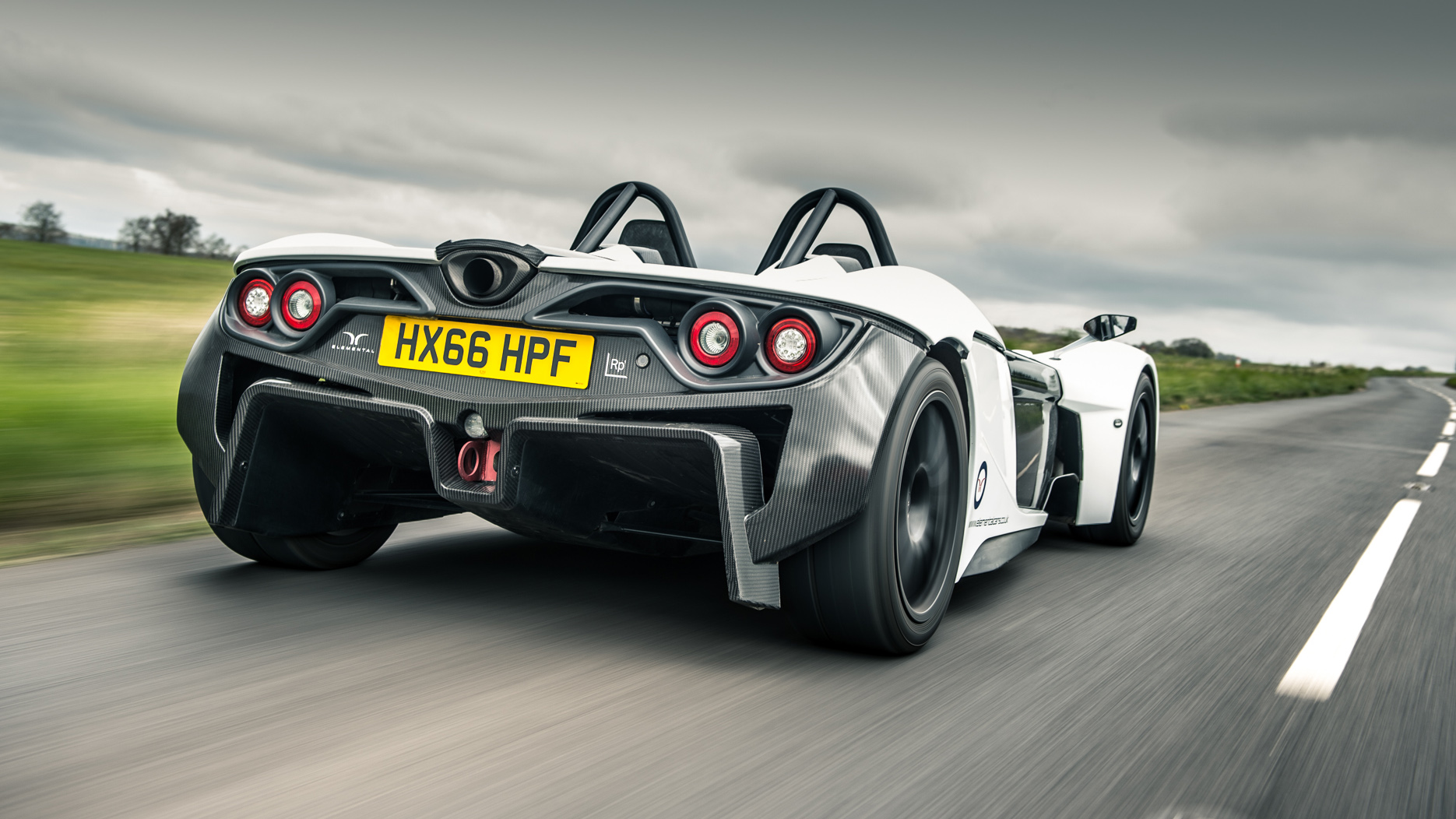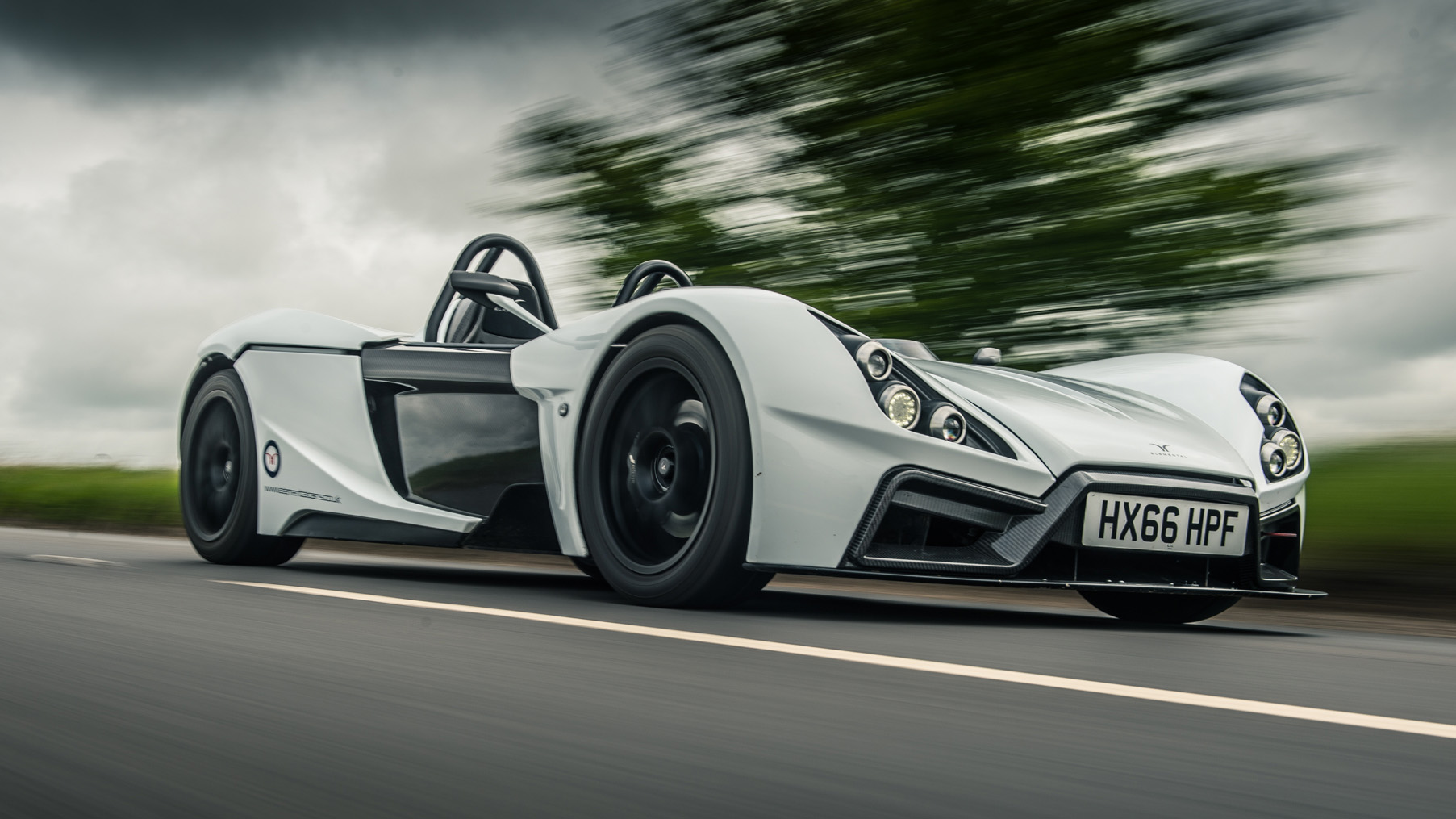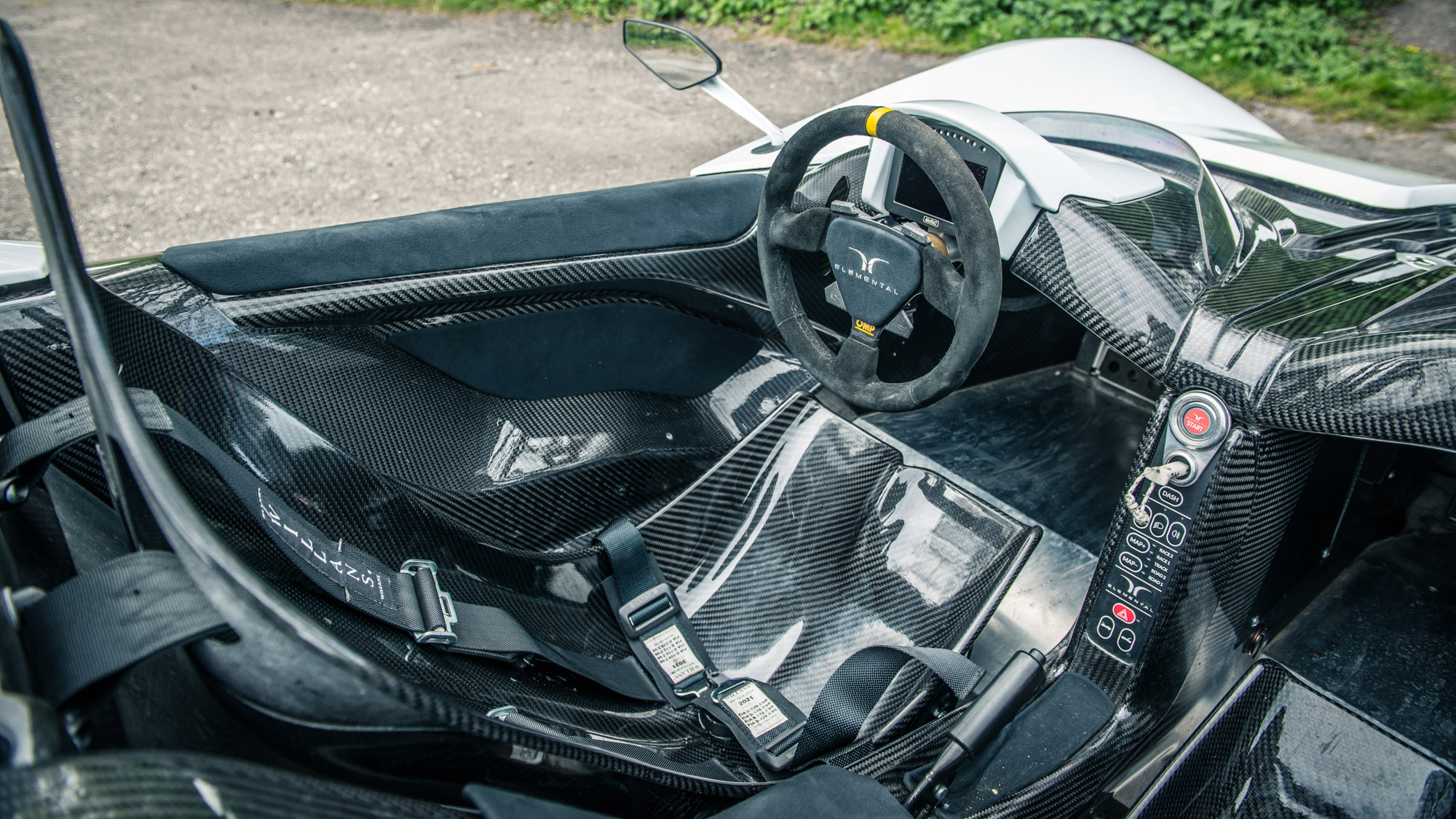
Elemental RP1 review
Driving
What is it like to drive?
The basics are exactly the same as any other car of this ilk, be it an Ariel Atom, BAC Mono, Caterham Seven, KTM X-Bow, Radical SR3 SL, Vuhl 05 etc. You’re very small, very low, very vulnerable and probably very cold. A hat won’t be enough. You’ll need a helmet, gloves and depending on how tough you’re feeling, possibly a waterproof suit, too.
Now you’re ready to drive. The overgrown toothpick you have in your hand is the key – push it into the dash and press the start button. There’s noise and vibration, but neither is excessive for a car of this type. Pull the paddle for first gear – it’s long, so you need to give it a healthy dose of revs to pull away (Elemental is working on a sharper throttle map), slipping the clutch. Or else you’ll stall and that’s plain embarrassing. On that subject Elemental also made sure the RP1 has a good turning circle, “you stand out enough in it”, founder and technical director John Begley says, “so the last thing you want is to have to make a 36-point turn when coming out of a parking space”.
The steering is, of course, unassisted, but the weighting is great at all speeds – you’re not heaving at it in town, and at speed it doesn’t become too flyaway. In fact, when you start to push a bit it weights up dramatically, an indication of the physical and aero forces the car is starting to manage. Once up and running you have no need of the clutch pedal, so why not go the full track hog and have a stab at left-foot braking? If ever there was a car to learn it in, it’s one with pedal feel and positivity as fabulous as this. The Alcon brakes are a treat to use.
But you have to pay attention because the Ecoboost delivers effortless, low key thrust. The turbo blows hard at low revs, and as soon as it does – after a heartbeat’s lag, shall we say – the RP1 is gone. 538bhp/tonne will have that effect. You don’t need revs, but you do need to be aware of the different engine maps. A button on the dash allows you to cycle through five, from Road 1 to Race 2. The first three up the power (from 240bhp to 280 and finally 320 in Track mode) and reduce the traction intervention, while the two Race modes further raise the nuttiness factor.
Road 2 provides everything you’ll need to make faintly ridiculous progress and test the tractive abilities of the Toyo R888R tyres. The gearshifts are utterly instantaneous and wonderfully mechanical as long as you have some load in the transmission. The more aggressive you are, the better they get. Transmission whine is well contained and the downshifts are remarkable for their smoothness.
But the engine isn’t that exciting to use. It’s all torque and no top-end fun. The limiter is set at 6,300rpm, the noise is more of a gusty drone and that alone means the Elemental doesn’t feel that fizzy and energetic – and you don’t need to visit it, because the engine’s hit so hard from 2,500-5,500rpm already.
But in the lightweight landscape that’s the sort of car the Elemental RP1 is: capable rather than chaotic; vigorous, not vicious. A Caterham dances along a road, an Atom is a sensory overload, but the RP1 is almost placid in comparison. It rides evenly, it’s stable and secure, it has few vices. Mostly this is a good thing – it means the Elemental isn’t as intimidating to drive as it is to look at, and the chassis balance is beautiful. The prototype had tremendous front end grip, but a snappy tail, this one is much more even, seeming to pivot under your backside. It follows the lead of the steering, and even if it does let go at the back, it’s friendly and you’ll catch it with the steering before the electrics get involved.
The downside of this is that it starts to feel a touch sensible. I know that sounds ridiculous for a car that’s busily rearranging your hair a la Trump, has unpadded carbon seats and hammers forwards at the slightest provocation, but it’s true.
And aero is the reason. Even at ordinary road speeds you feel it working. The steering has that bit of extra weight, the RP1 takes on a more hunkered feel, there’s more positivity to it and that removes the sense of flightiness. Maybe it’s a good thing, maybe it’s the future. It’s certainly different, and that’s important for the future security of Elemental when clinging to life as a British sports car company is so tenuous. Witness the recent demise of Zenos.
So the aero works and that’s important. In fact more than that, I think downforce is perhaps more relevant and certainly more noticeable here than in any supercar you choose to mention. What’s so revolutionary about a 1,420kg Porsche 911 GT3 RS having 330kg of extra grip at 125mph when this is within a gust or two of being able to drive itself upside down?
We haven’t driven it on a track yet, but I suspect that’s where it will come into its own. We’ll rectify that as soon as we can. On road you have the physical compromises without the associated madness. Maybe because it is more reassuring than others Elemental is right in its hope that people will use it for road trips and the like.
Featured

Trending this week
- Car Review
Vauxhall Mokka






